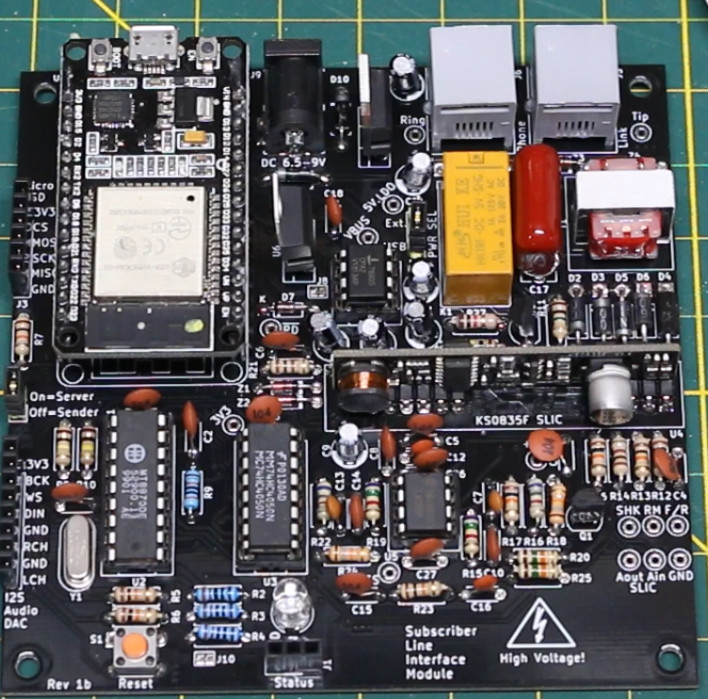POTS Telephone Subscriber Line Interface Module

Note
- This project is intended for hobby/personal use to explore how the plain old telephone service works.
- The PCB isn't designed to integrate with a live phone line. It is intended to create an offline system for local use.
-
It is recommended to add a TO-220 heat sink to the 3.3v regulator in case it gets too hot. I used Wakefield-Vette 274-3AB along with thermal paste and a nut/screw I had around.
-
One pcb is needed for each phone/modem/etc. One board has to have a jumper installed on J5 to act as a Server node and the other board(s) must have the jumper vacant to act as Sender nodes.
-
The Server board must connect to a WiFi router to function properly. The SSID and Password for the router must be defined by editing the "arduino_secrets.h" file before compiling the sketch.
-
The telephone numbers are 7 digits long and are configured by editing the "project_globals.cpp" file and changing the numbers assigned to remotePhoneNumber and localPhoneNumber.
-
The region can be configured by uncommenting the desired line in the "project_globals.cpp" file, setting myRegion equal to North America or UK.
-
Each board should be powered from an external 5 volt DC supply capable of 500mA since each board can draw several hundred mA.
-
USB power can be used for programming and some testing, but the board may not be as stable as when powered externally.
-
Set the power jumper J8 for USB or EXT as needed.
- The transformer is a 600:600 ohm audio isolation type. The part used in the prototypes is from Ali Express, such as the red 4 pin ones here with description words such as EL14 included: https://s.click.aliexpress.com/e/_Dmlkp3z
-
Power up the Server board first and wait for the blue LED to light up on the ESP module's built in LED to indicate it has joined the WiFi router.
-
Then power up the Sender board so it can try to auto-pair with the Server board over ESP-NOW. In the future, software may be improved so the Sender board will auto-pair whenever the Server board is ready.
-
Check out this similar project being worked on: https://github.com/ktownsend-personal/RetroPhone
Shield:
This work is licensed under a Creative Commons Attribution-ShareAlike 4.0 International License.

